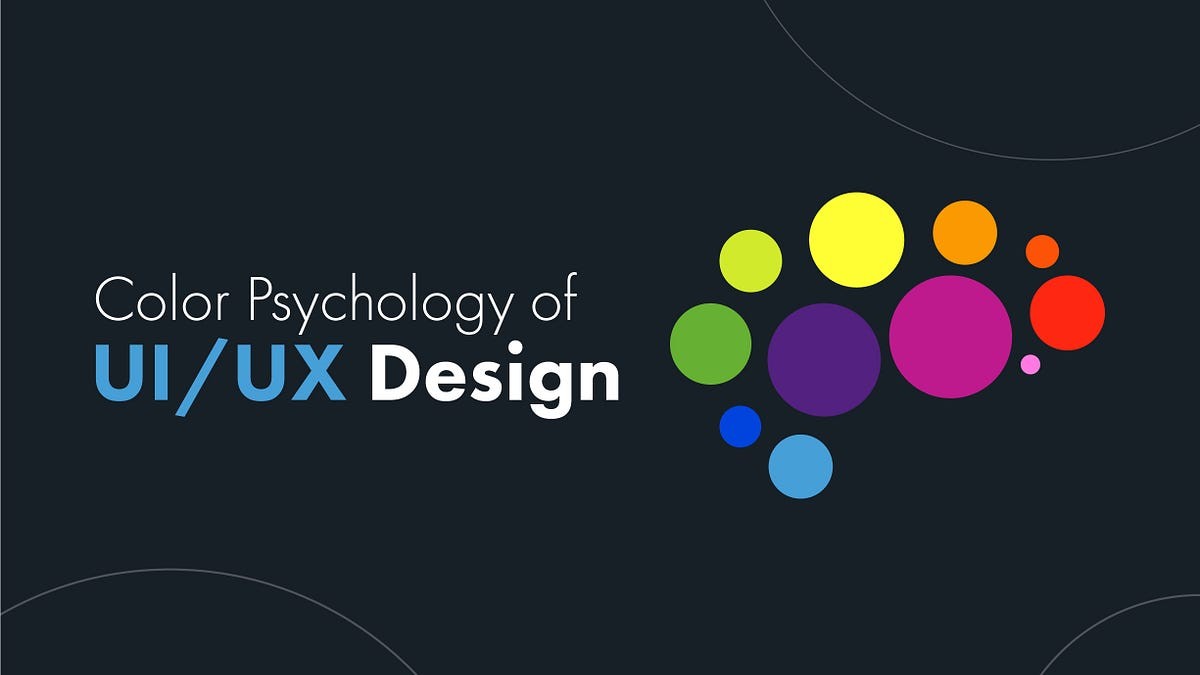The Impact of Color Psychology in UX/UI Design
Color psychology is a powerful tool in UX/UI design that influences user perceptions, emotions, and behaviors when interacting with digital products. By understanding how colors evoke specific responses and convey messages, designers can strategically use color to enhance usability, improve user experience, and achieve business objectives. This comprehensive guide explores the principles of color psychology, its applications in UX/UI design, best practices, and real-world examples showcasing its transformative impact on user engagement and satisfaction.
Understanding Color Psychology
Color psychology studies how colors affect human emotions, cognition, and behavior. Different colors evoke distinct psychological responses due to cultural associations, personal experiences, and biological factors. In UX/UI design, color plays a critical role in establishing visual hierarchy, conveying brand identity, guiding user interactions, and influencing user perceptions of usability and functionality.
Key Principles of Color Psychology in UX/UI Design
- Color Associations:
- Warm Colors (Red, Orange, Yellow): Evoke energy, warmth, and excitement. Often used to grab attention and stimulate action (e.g., call-to-action buttons).
- Cool Colors (Blue, Green, Purple): Convey calmness, trust, and reliability. Frequently used in backgrounds and to establish a sense of stability.
- Color Symbolism:
- Colors may have cultural or contextual meanings that impact user perceptions. For example, red can signify danger or urgency in some cultures but symbolize luck or prosperity in others.
- Color Contrast and Accessibility:
- High contrast between text and background colors enhances readability, especially for users with visual impairments.
- Consider color blindness and ensure information conveyed through color is also distinguishable through other visual cues (e.g., patterns, symbols).
- Color Harmony and Consistency:
- Use color harmonies (e.g., complementary, analogous) to create visually appealing designs and maintain consistency across interfaces.
- Establish a cohesive color palette that reflects brand identity and resonates with target users.
Applications of Color Psychology in UX/UI Design
- Visual Hierarchy:
- Use color contrast and saturation to prioritize information and guide users' attention to important elements such as headlines, buttons, and interactive components.
- Lighter colors for backgrounds and darker shades for foreground elements help establish hierarchy and readability.
- Brand Identity and Recognition:
- Consistent use of brand colors across digital touchpoints reinforces brand identity and fosters recognition among users.
- Select colors that align with brand values, personality, and target audience preferences to strengthen brand perception.
- Emotional Design:
- Choose colors that evoke desired emotional responses aligned with the user journey and intended user experience (e.g., calm and reassuring for healthcare apps, vibrant and energetic for entertainment platforms).
- Cultural Considerations:
- Research cultural color meanings and preferences to ensure designs are culturally sensitive and resonate with global audiences.
- Adapt color choices based on regional preferences and cultural nuances to avoid unintended associations or misunderstandings.
Best Practices for Using Color in UX/UI Design
- Understand User Context:
- Consider user demographics, preferences, and contexts of use when selecting colors to ensure relevance and effectiveness.
- Conduct user research and usability testing to gather feedback on color choices and their impact on user experience.
- Accessibility Compliance:
- Follow accessibility guidelines (e.g., WCAG) to ensure color choices support readability and usability for users with visual impairments.
- Provide options for users to customize color settings based on individual preferences and needs.
- Iterative Design and Testing:
- Iteratively refine color choices based on user feedback, usability testing results, and performance analytics to optimize user engagement and satisfaction.
- A/B testing can help compare the effectiveness of different color schemes in achieving specific design goals and business outcomes.
Case Studies and Examples
Highlight successful implementations of color psychology in UX/UI design through case studies of digital products or interfaces. Showcase how strategic use of color has improved user engagement, enhanced usability, and contributed to overall design success. Illustrate measurable outcomes and user feedback to demonstrate the impact of color psychology on achieving design objectives.
Color psychology is a fundamental aspect of UX/UI design that influences user perceptions, emotions, and interactions with digital products. By leveraging color effectively, designers can create intuitive, engaging, and user-centered experiences that resonate with users and drive business success. Understanding the principles of color psychology, applying best practices, and conducting iterative testing are essential for harnessing the full potential of color to enhance usability, establish brand identity, and foster positive user experiences. Embrace color psychology as a strategic tool to create impactful designs that not only meet user needs but also elicit positive emotional responses and lasting impressions in the competitive landscape of digital design.






































